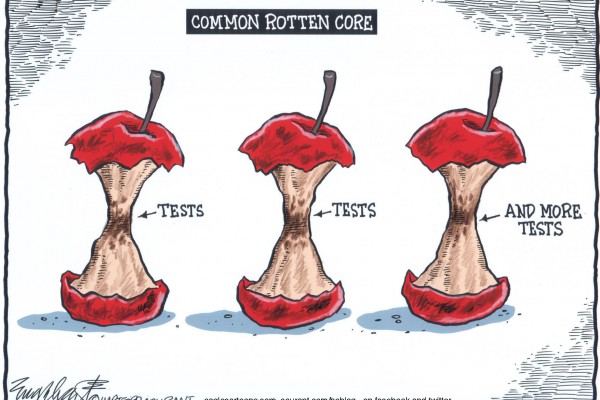A PRACTICAL GUIDE TO COMMON CORE
 04 APR 2014
04 APR 2014  POSTED BY AHAMILTON
POSTED BY AHAMILTONBY JOHN THOMPSON
Common Core standards are a sideshow. The real issue is the “unfunded nightmare” of high-stakes Common Core or “Common Core-type” testing.
Improved standards of learning can contribute somewhat to school improvement. During the 1980s, Massachusetts schools, ranked 8th or 9th nationally, used high-quality, well-funded standards-based reforms to become No. 1.
Under Sandy Garrett, Oklahoma consistently earned B+s or better on its standards. Garrett’s implementation of standards-based reforms was just as exemplary as that of Massachusetts’, but we still earn Ds and Fs on student performance.
Oklahoma offers excellent education in low-poverty schools but provides deplorable schools for poor children of color. Great standards are nice, but an overwhelming body of research explains why curriculum-driven, test-driven reforms cannot address the real problem – poverty.
And it’s unlikely that America will fund the $16 billion price tag for properly implementing Common Core.
I once welcomed Common Core. Its advocates acknowledged that bubble-in accountability had failed. The standards seemed to be a corrective to the primitive basic skills, worksheet-driven malpractice encouraged by No Child Left Behind. Under NCLB, test prep and remediation drove the joy of learning A Practical Guide To Common Core | Oklahoma Observer:

